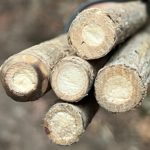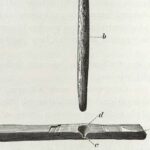In Southern Africa, fourteen species of Bushwillows belong to the Combretum family. Other trees of the same Combretum family are Clusterleaf species, Leadwood, and others. Interestingly, not all Combretum species are suitable for firewood, but some are excellent for that use.

The wood hardness of Combretum family members
Although it belongs to the same plant family as Combretum, leadwood is the second hardest wood in Southern Africa. It is highly sought after for firewood and cannot legally be cut down without a special permit. All Bushwillow species got very hard and suitable wood for fires. On the other hand, all Clusterleafs are softwood species, which every self-respected bush cook will not even give a second look to use for cooking.
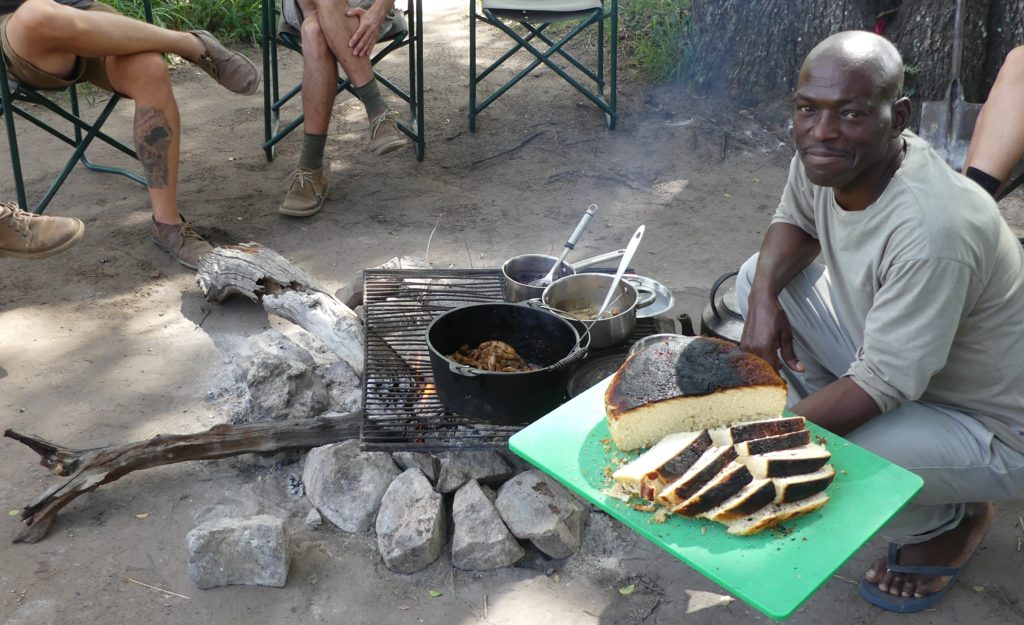
Difference between Red- and Russet Bushwillows
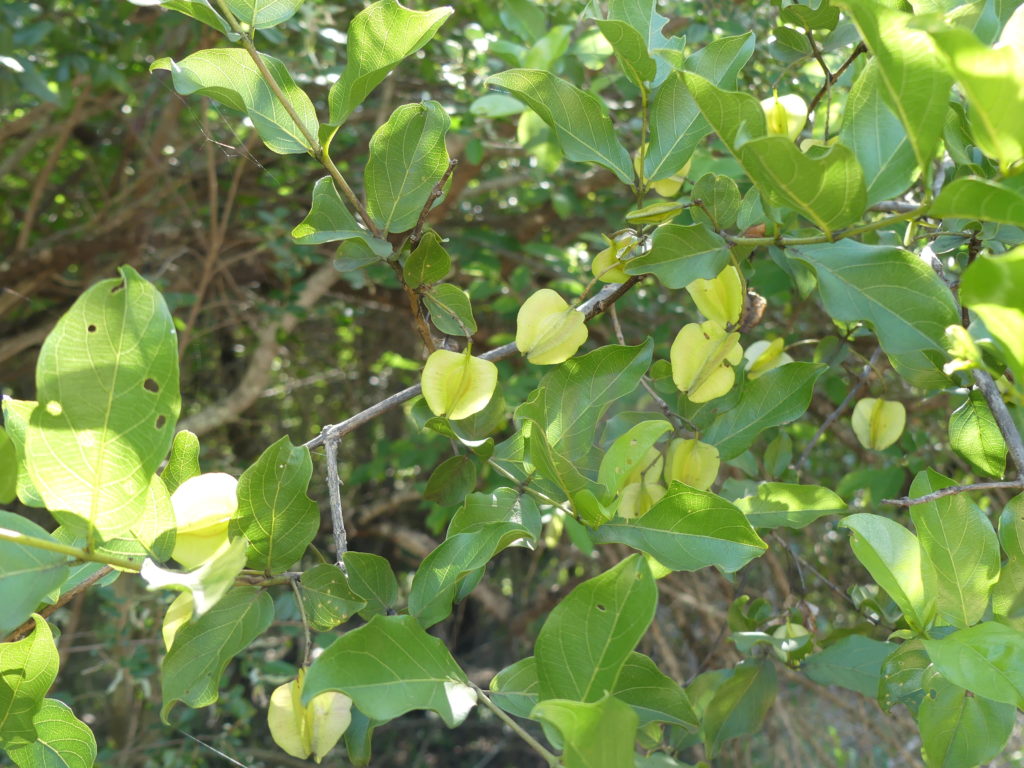
Many Bushwillow species have overlapping distribution ranges, and two of them are most common within these ranges. These are the Red Bushwillow (Combretum apiculatum) and the Russet Bushwillow (Combretum hereroense). The general appearance and fruits of both species are similar. Red Bushwillow is characterized by leaves, which have a pointed apex and are curved backward. And its wood has reddish-colored core wood.
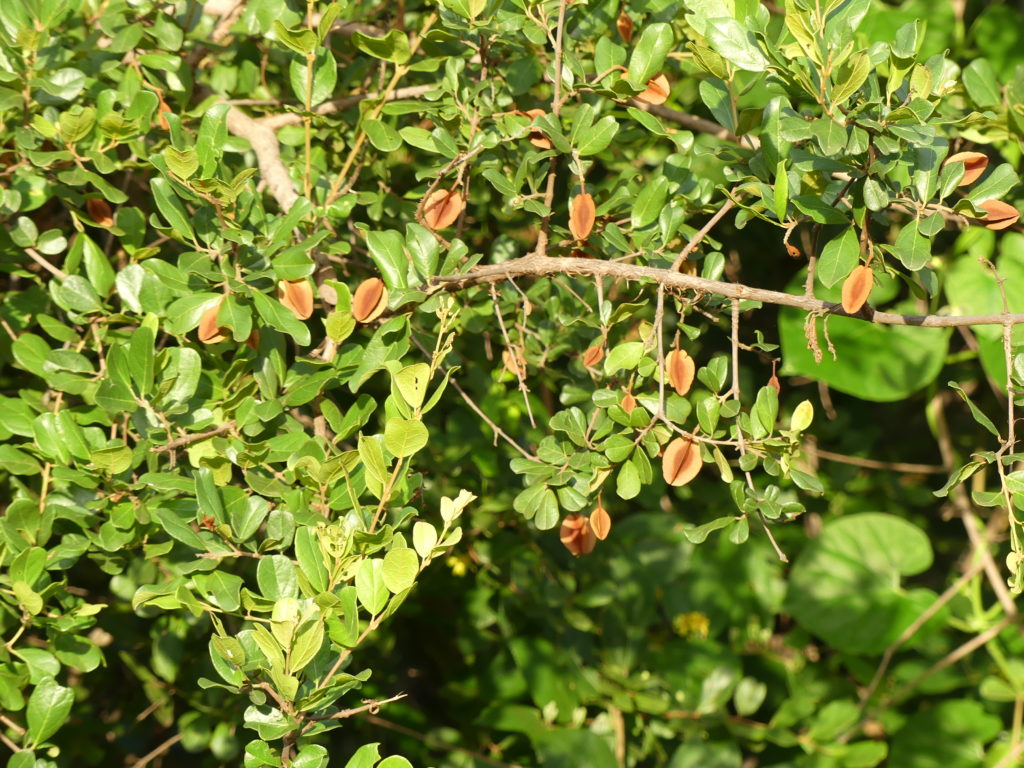
Russet Bushwillow leaves have a rounded apex and are flat stretched. Here, you can find some more information about Red Bushwillows.
The best firewood is ‘Dead, Dry and Fallen.’
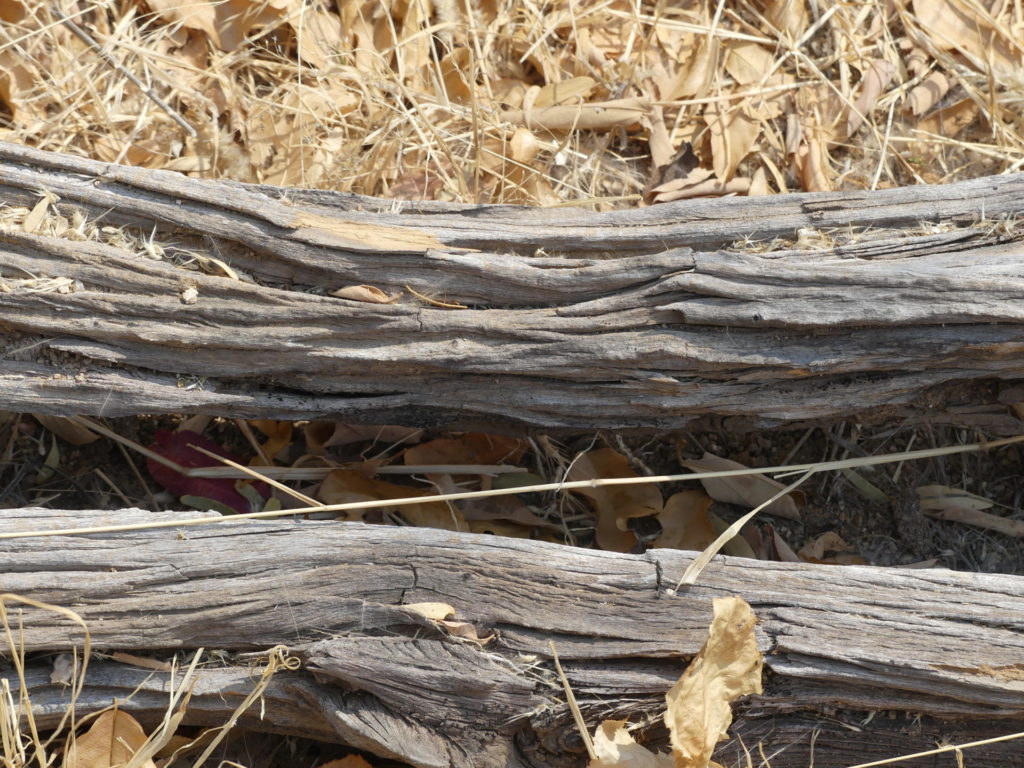
Firewood in Boreal forest biomes should be ‘Dead, Dry and Standing.’ But savanna biomes have got their own arithmetics. When a tree dies, it will usually not dry and stand for long. Firstly, termites will ‘sheet’ the outside of their food (wood). Secondly, this dead, dry, and standing tree will soon fall to the ground, which is very good for turning it into firewood. When lying on the ground, this tree becomes food for various organisms. Furthermore, humidity will speed up decay. In addition, fungi, woodborer beetles, and still more termite colonies will eat up all soft and digestible parts of the wood.
From an, e.g., Silver Clusterleaf (Terminalia sericea) at the end of this decaying process, nothing will be left. On the other hand, large portions will be left from a Red Bushwillow. They were too hard for fungi, wood borers, and termites to make a dent – and this is superb firewood.
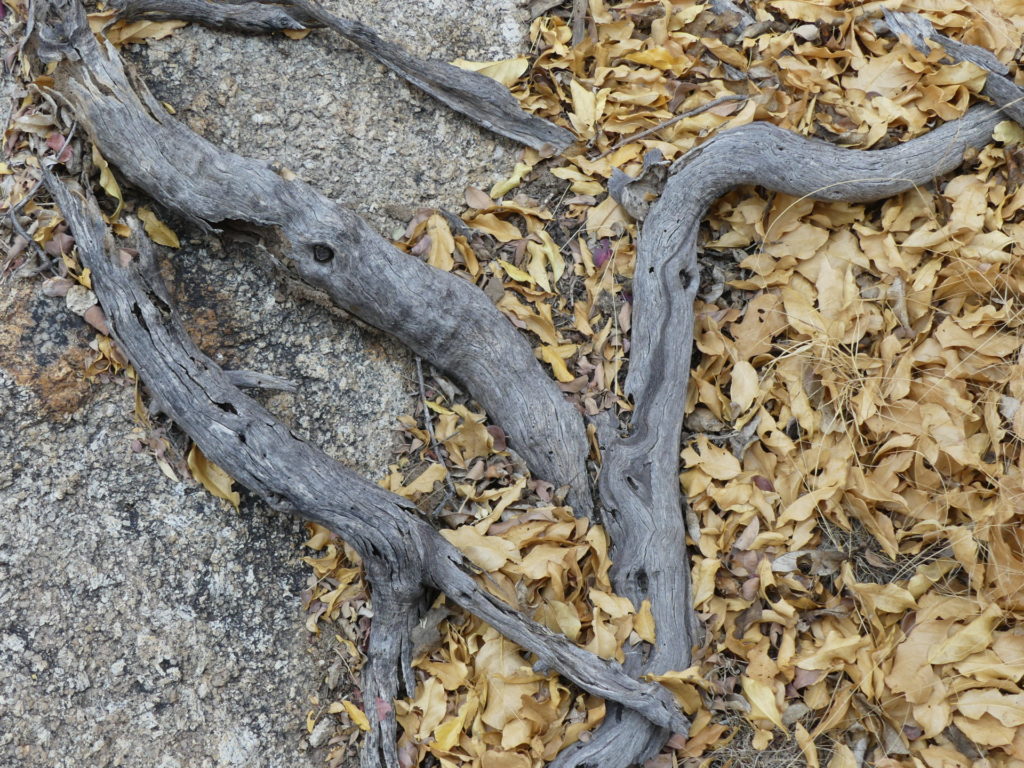
How to collect firewood
Just walk the bushveld and collect the remaining parts of the wood that termites did not eat up. Shake out the sand and remaining termite sheeting. Please be careful not to touch arachnidan (scorpions or spiders) underneath. Giving every piece of hardwood on the ground a good kick with the foot before touching it is essential. When handling this wood, every piece should be visually inspected immediately to ensure no harmful critters are hiding in the nooks and crannies.
Personal experience when collecting firewood
Once, a friend collected firewood next to me and was excited that a small snake was hiding inside one of his firewood pieces. Getting this small snake out of there was difficult, so we took a stick and squeezed her out somehow. We didn’t know which species it was, so we took a photo. Later, when we were back at camp, our mentor was a bit shocked, as it was a highly poisonous species.
Quality of Red Bushwillow as firewood
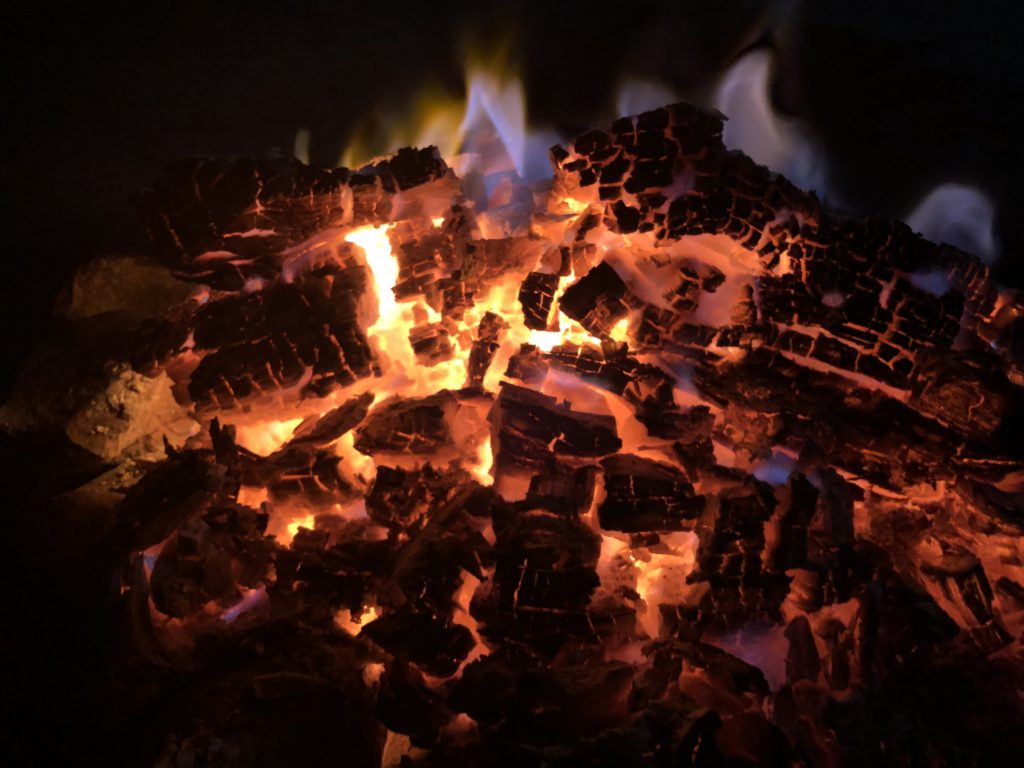
It also has to be recorded that Red Bushwillow firewood starts burning very well. It does not generate sparks, burns slowly and very hot, and turns into coals with nearly no ashes. A log about 1 m x 20 cm will burn the whole night, and in the morning, the coal in the ashes can still be used to start a new fire.
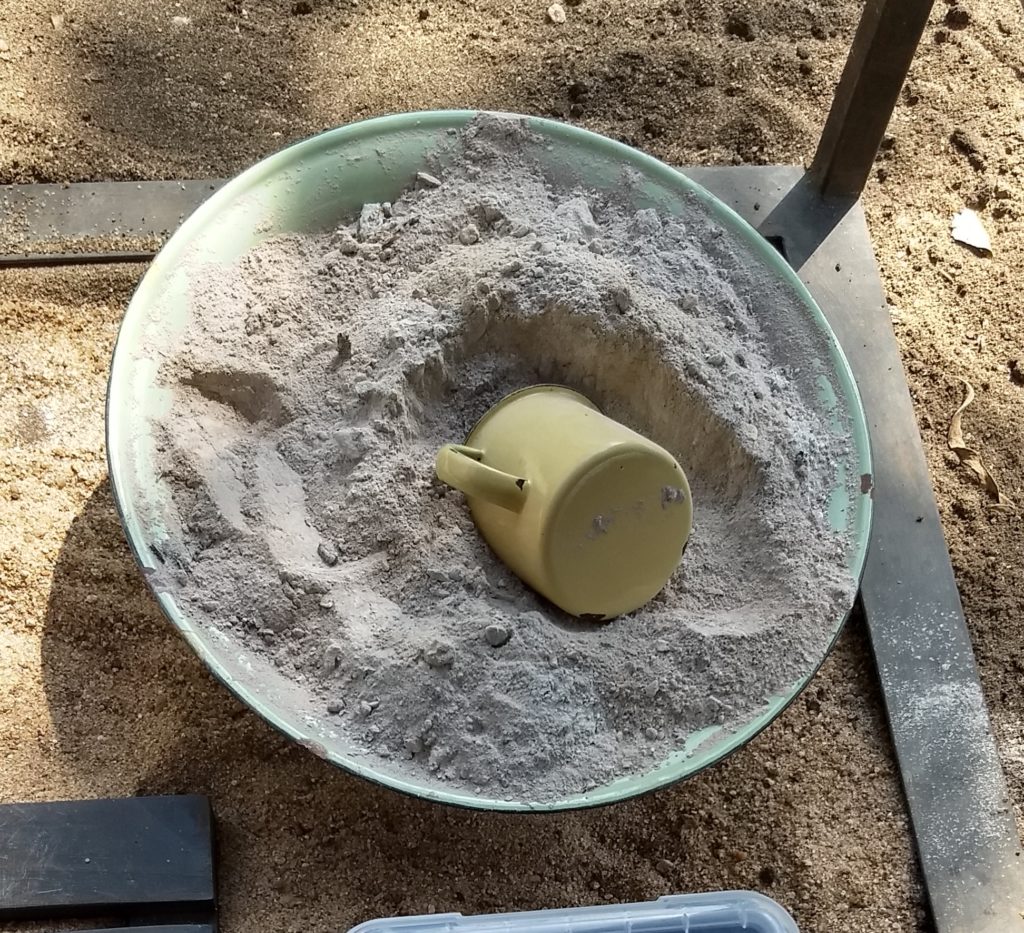
Another good firewood in Southern Africa is Camelthorn, described here on this website.
Lessons learned about Red Bushwillow as firewood
- Not all Combretum species are suitable for firewood
- Red Bushwillow is an excellent one
- Firewood should be collected on the ground
- It should have been eaten up by termites, with only hardwood remaining
- When collecting firewood, special care has to be taken against critters
.



